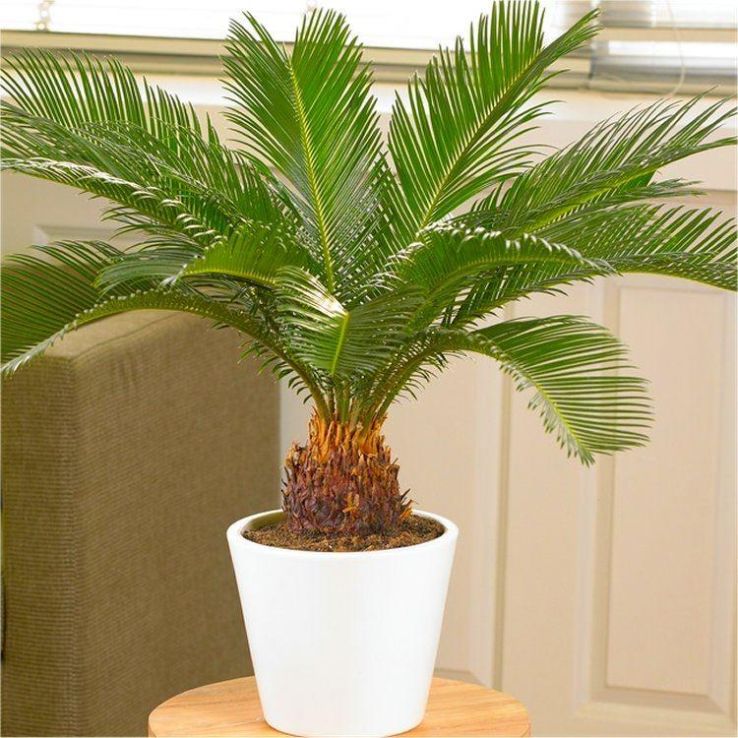Cycad - Cycas revoluta - King Sago Palm Tree 40-60 cms
Availability: Out of stock
SPECIAL DEAL - Usually 39.99, today just 25.99 - Save £14!
Cycas revoluta is one of the most primitive living plants, they are very unusual and popular ornamentals. A rugged trunk, topped with whorled feathery leaves has lead to the common name ''King Sago Palm'' - our customers often refer to them as looking like Pineapples! They are of course not edible!!
Cycas revoluta, one of the most primitive living plants, are very unusual and popular ornamentals. A rugged trunk, topped with whorled feathery leaves has lead to the common name ''Sago Palm'', however it is actually related to conifer and Ginko trees - all cone bearing plants which trace their origins back to the ancient flora of the early Mesozoic era. Often called ''living fossils'', Cycads have changed very little in the last 200 million years.
While various species of Cycads can be found throughout the world, the subtropical Cycas revoluta is native to the Far East and has been used as a choice container and landscape plant for centuries. The growth habit of Cycas revoluta displays an upright trunk topped with stiff feather-like leaves growing in a circular pattern. Rather than continuously adding foliage, Sago's produce a periodic flush of new leaves. Eventually, offsets begin to grow at the base of the specimen, and occasionally in the crown. The addition of offsets provides a source of new plants and many possibilities for developing an unique specimen. Regardless of age or size, Cycas revoluta is one of the easiest plants to grow, indoors or out, by beginner or expert.
This subtropical adapts to a wide range of temperatures from -11 to 42 degrees C, accepts full sun or bright interior light, thrives with attention, and tolerates neglect. In addition, Cycads are extremely long-lived. A 220 year old specimen of Encephalartos, a relative of Cycas revoluta, is on display at the Royal Botanic Garden Kew; the restoration of the famous Palm House required it to be temporarily transplanted to a holding area for more than a year; the move was successful and is an example of the durability of these ancient ''living fossils''. Supplied at a height of approx 40-60cms including pot.
SPECIAL DEAL - Usually 39.99, today just 25.99 - Save £14!
Recently Viewed Products











